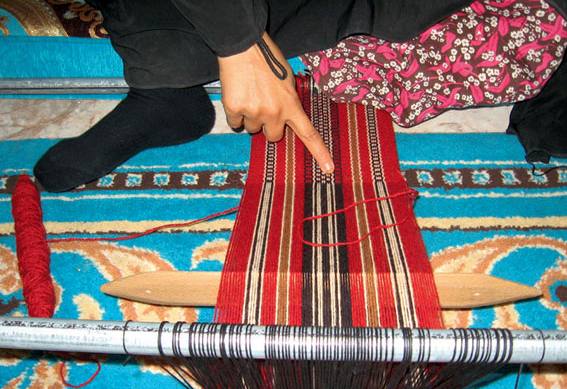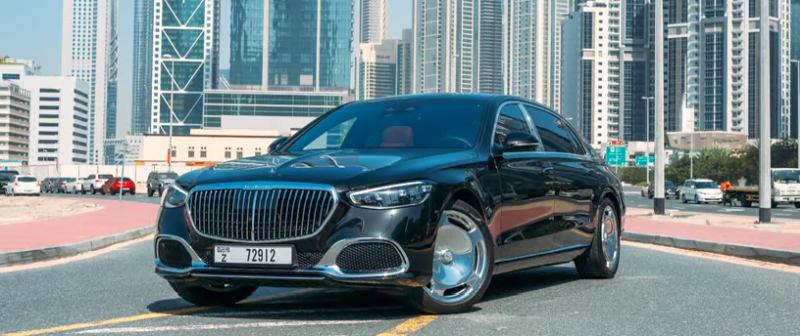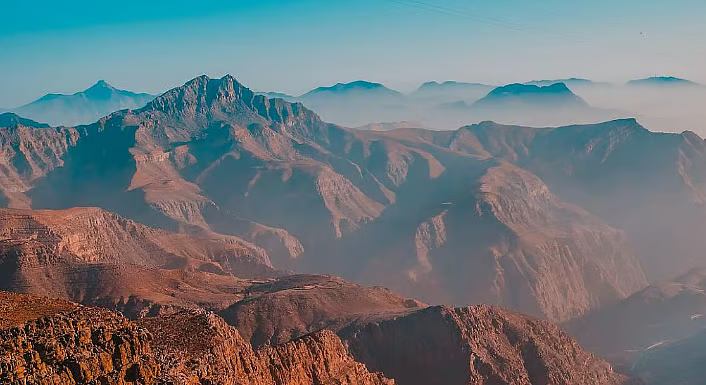Weaving up life in desert
Years ago, Nayla Saeed Mubarak Al Mansouri used to live in Abu Dhabi with her husband, but since a new rule forbid the keeping of camels in the capital, she decided it’s time to move back to the desert.

Emirati Weaving Mufflers Courtesy Khleej Times
Her home in Ghayathi today is pretty much as it was when she first came here: an old Arabian villa with large salons for men and women, and separate building for kitchen. In one of the ladies’ rooms is where Nayla spends a few hours every day.
“This is where I come to do my sadou,” she says showing the colourful weaving taking shape on the long metal bars that run the length of the room.
“I learnt this traditional way of weaving from my mother and my grandmother, but I made my first sadou when I was already an old woman, at 15 years old,” she adds not joking.

Sadou, the traditional Bedouin weaving using a floor loom, is among the most ancient “industries” in the Gulf. Using wool from camels and goats, which they yarned themselves, women used to make carpets, saddlebags and tent-houses that they mostly used for themselves or sometimes traded.
 Tower
blocks taking over desert tents, sadou was a dying craft until authorities and
organisations in the country gave it a helping, surviving hand. Along with other
Emirati customs and traditions, sadou is now part of Sougha, an initiative
launched by Khalifa Fund in 2009 to help preserve the heritage of UAE through
artisan products.
Tower
blocks taking over desert tents, sadou was a dying craft until authorities and
organisations in the country gave it a helping, surviving hand. Along with other
Emirati customs and traditions, sadou is now part of Sougha, an initiative
launched by Khalifa Fund in 2009 to help preserve the heritage of UAE through
artisan products.
“About three years ago the people from Sougha came to us to explain about their project. They taught us how to make modern, different objects from sadou, like bags or bookmarks, which they will sell for us without any commission,” says Nayla.
“We already tried to do something similar ourselves, but it wasn’t successful because we used cheap material like nylon. Khalifa Fund helped us by supplying good quality wool and cotton.”
Ghayathi was where the Sougha initiative actually started. In this desert town in the far west of Abu Dhabi emirate, life has barely changed in the past decades. Yes, there are schools, shops, running water and electricity, but men still receive guests in their majlis tents outside their houses and women pass their days with Arabic coffee, children and sadou.
For Nayla and the ladies of Ghayathi, making good cash out of something they love doing without having to leave the house is ideal. There are no restrictions on her creativity or the types of objects she wants to design.
“See these bags? They have the colours of Gucci brand. Don’t you think they’re beautiful? Why can’t I sell them then with the prices of Gucci?” she laughs.
After a training workshop on marketing, the Sougha initiative allowed the ladies not only creative freedom, but enabled them to price their own products too.
“And it is not even compulsory to sell their crafts to us. They may sell to anybody else they like, if they wish so,” pointed out Qumasha Al Muhairi, counsellor of Sougha.
“To apply for a Khalifa Fund finance, you need a business plan, feasibility report etc. Sougha is a different story. It has a social component, and a heritage one. It was established to help Emirati artisans nationwide and to preserve Emirati heritage,” she explained.
The initiative began in Abu Dhabi emirate, but it now covers the entire country. It is open for any Emirati national with a talent for a traditional craft, from sadou to combar (palm tree ropes) and from khouss (palm leaf weaving) to ghazel (wool spinning) and talli (embroidery).
In Abu Dhabi emirate alone, there are now over 400 people in the Sougha initiative and nearly 300 of them are earning a monthly income from it. Some reach as much as Dh30,000 a month, depending how productive they are.
“We are now going to start new groups in Fujairah, Ras Al Khaimah and Ajman. There is even a group of 14 men from Ras Al Khaimah and two men from Fujairah doing palm leaf products, ropes and furniture, some also made from fishing tools,” revealed Qumasha.
With these new groups, Sougha is also introducing new products, such as traditional Arabic oil perfumes, which long ago were mixed in the home using secret family “recipes”, and candles made using natural wax mixed with Arabian scents such as oud or jasmine.
“To be part of Sougha, all you need is talent. We will give you financial training, advise on designs, materials, equipment, we will pick up your products, sell them and give you back the money without taking a single Dirham for ourselves,” said Qumasha.
For the time being, permanent sales are done through Etihad Airways flights and boutique shops in Abu Dhabi’s Central Market and Dubai’s More Cafe. Major exhibitions and festivals such as the Abu Dhabi International Book Fair or Al Dhafra Camel Festival are also venues where these Emirati handicrafts sell successfully.
“Government departments too now prefer to offer as gifts to guests a Sougha object rather than a Swiss watch, since it is representative of our heritage,” pointed out Qumasha.
In 2011, Sougha sales reached Dh1.3 million, from Dh450,000 in 2010, and this year the figures are expected to be even higher.
“When people see how much money their friends, neighbours or relatives make from their handicrafts, they want to join too,” said Qumasha.
This was the case of Salma Ahmad Hamed Al Mansouri, Nayla’s neighbour in Ghayathi. She didn’t go to the first Sougha meeting, but when she learnt the details, she came along to the second one.
“With the money I’ve made from my sadou I was able to go to Makkah for Umrah and renovate my house,” she says bringing out a few samples into her majlis tent.
“The book fair is coming up at the end of March in Abu Dhabi, so I make
special sadou objects for it. See, this is a book cover, this is a book mark and
I also have a laptop cover and bags,” explains Salma, who liked the idea of book
covers so much that she made a personal one for her copy of the Holy Quran.
While she is sitting down to give a weaving demonstration, she remembers the old
days. “The reason the sadou looms are so long is because before we used to make
big tents. We only used undyed wool from our camels and goats. Some of the goats
have black or dark red wool and we use that in two horizontal lines at the
bottom of the tent for a nice design.”
“Those were strong tents and even when it rained the water would not come inside
because the wool was thick, with no gap in the weaving.”
“I learnt how to make sadou from my mother, but giving this modern life I didn’t
think I’ll do it again. I really appreciate what Khalifa Fund is doing for us.
It is life changing,” she says, her voice falling into nostalgic memories.
There is never too much time to linger in the past, though. Her daughters, now
back from school, gather around to have a look at sadou “moves”. It is time for
lunch.
Aricle by Silvia Radan silvia (at) khaleejtimes.com Courtesy Khaleej Times
Post our articles here Contact us for details
Content-type: text/html





